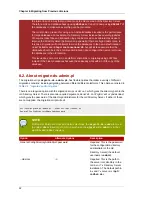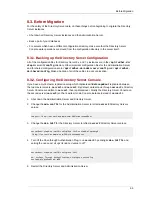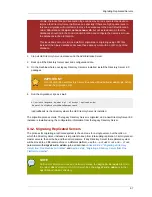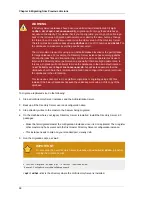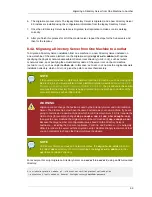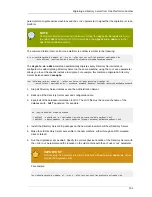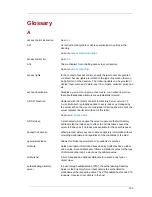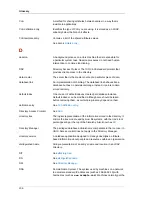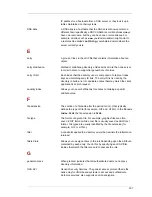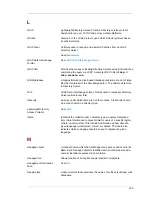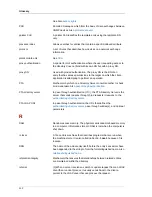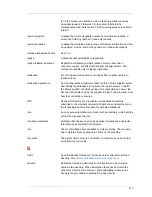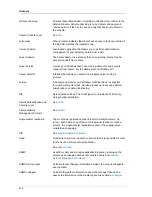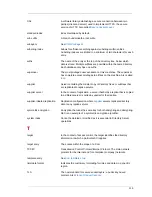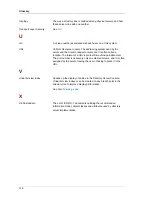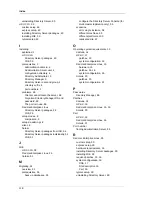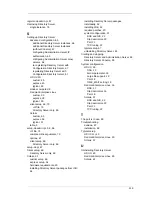
Glossary
106
CoS
A method for sharing attributes between entries in a way that is
invisible to applications.
CoS definition entry
Identifies the type of CoS you are using. It is stored as an LDAP
subentry below the branch it affects.
CoS template entry
Contains a list of the shared attribute values.
See Also
template entry
.
D
daemon
A background process on a Unix machine that is responsible for
a particular system task. Daemon processes do not need human
intervention to continue functioning.
DAP
Directory Access Protocol. The ISO X.500 standard protocol that
provides client access to the directory.
data master
The server that is the master source of a particular piece of data.
database link
An implementation of chaining. The database link behaves like a
database but has no persistent storage. Instead, it points to data
stored remotely.
default index
One of a set of default indexes created per database instance.
Default indexes can be modified, although care should be taken
before removing them, as certain plug-ins may depend on them.
definition entry
See
CoS definition entry
.
Directory Access Protocol
See
DAP
.
directory tree
The logical representation of the information stored in the directory. It
mirrors the tree model used by most filesystems, with the tree's root
point appearing at the top of the hierarchy. Also known as
DIT
.
Directory Manager
The privileged database administrator, comparable to the root user in
UNIX. Access control does not apply to the Directory Manager.
directory service
A database application designed to manage descriptive, attribute-
based information about people and resources within an organization.
distinguished name
String representation of an entry's name and location in an LDAP
directory.
DIT
See
directory tree
.
DN
See
distinguished name
.
DM
See
Directory Manager
.
DNS
Domain Name System. The system used by machines on a network
to associate standard IP addresses (such as 198.93.93.10) with
hostnames (such as
www.example.com
). Machines normally get the

